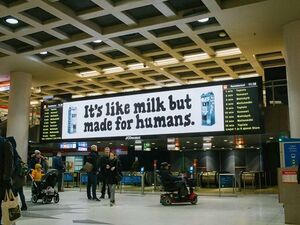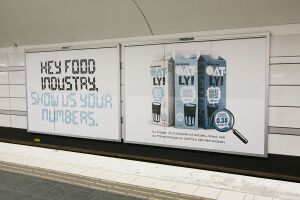Linguistic landscape in ecolinguistics
A linguistic landscape approach to ecolinguistics would include analyzing the way that language and semiotics are used to creating meaning in relationship to the environment. Data included in such a study would include taking photographs of billboards, street signs, store signs, item labels. Such a study can include items in the mobile landscape, which would include items such as car bumper stickers, t-shirts, caps or any clothing item for that matter. Essentially, the mobile landscape encompasses items that are moving and less permanent.


Oatly ads could be an easily interpretable example considering their consistent references to the environment and the impact of their product on the environment. The ads play off the general knowledge that eating meat and dairy products are more resource-intensive than their plant-based counterparts. So, a ecolinguistics study could potentially study solely the way that the brand Oatly indexes the impact of products on the environment through language.
The first image of the ad in Helsinki implies that animal-based milk is meant for animals. Essentially, cow's milk is meant for baby calves and not for human consumption in order to sway consumers to drink a plant-based milk/drink. The second image is an ad in another subway station in an unknown location that pressures fellow companies to put information about the environmental impact of their products on their packaging and in general to make them public knowledge as the image shows Oatly products do.
These (along with other images) could be included in an ecolinguistics study to examine the influence of such ads on the public understanding of food consumption and its impact on the environment. Such a study could be further to include a survey to see public's understanding and attitudes toward such products and if they have wavered as a result of advertisment.